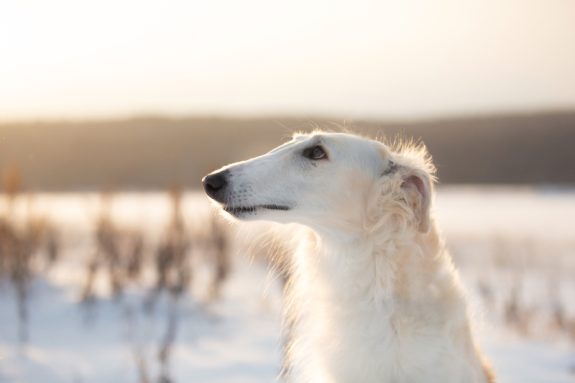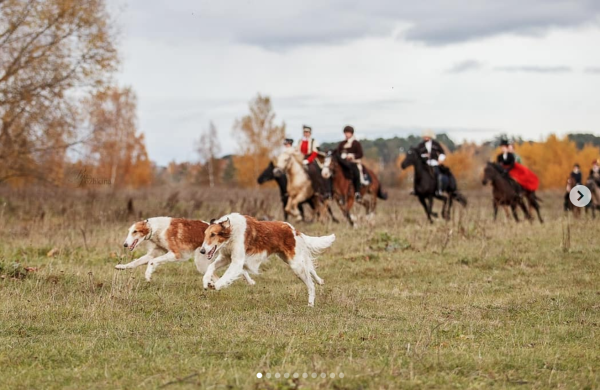
Any outdoor enthusiast who has shopped for long underwear can tell you that most thermals are made from one of four main fabrics: Cotton, synthetic, wool, and silk. Each has its attributes, but by and large, most experts agree that when it comes to staying warm, silk and wool are the better choices. But which one of these natural fabrics?
Proponents of silk point out that silk wicks moisture slower than wool, “breathes” better than wool, and dries faster. Some say that ounce for ounce, silk is warmer than wool, and this is why a silky coat in a Borzoi was so prized by early Russians. They felt that silky hair clung closer to the body, and thus kept the dog warmer. This was critically important in a hound that hunted in the frigid cold of Russian winters.
A silky, rabbit-soft coat enabled a running Borzoi to dissipate heat while running. It “wicked” away any dampness imposed upon the dog by snow, and because it was silky, sticks, burrs and leaves were less “attracted” to it than if the coat was cottony. A soft, plushy undercoat thickened for winter was shed in hot weather to prevent overheating. Indeed, it’s said that in texture and distribution over the body, the Borzoi coat is unique.
That said, a coated breed in the show world can be at risk of the “more is better” thinking, but no Russian hunter would have approved of an excessive amount of coat because it would have put the dog at risk of overheating. Remember, the Borzoi is a working dog that was bred for hundreds of years to course for wolves, hares, and other animals. Russian nobility kept hundreds and hundreds of hounds in their kennels (the Grand Duke, himself, kept eight kennels based on color and pattern), and hunts could last for days. Soundness, of course, mattered. Russians wouldn’t have bothered to keep a dog that failed to perform, but a structurally robust dog with a poor coat was also at a disadvantage, and so coat texture mattered, as well. Hunters didn’t want to spend time grooming their dogs, and thus a silky coat that shed dirt, resisted matting, and kept the dog warm, but not too warm, was ideal.

We offer our thanks to Rita Lozhkina for allowing us to share her marvelous photographs. You can see more of them on her Instagram page: https://www.instagram.com/rita.lozhkina.photo/
Borzoi breed standards around the world call for this coat texture. From the AKC: “Long, silky (not woolly), either flat, wavy or rather curly. On the head, ears and front of legs it should be short and smooth; on the neck the frill should be profuse and rather curly. Feather on hindquarters and tail, long and profuse, less so on chest and back of forelegs.”
From the FCI: “Hair: Silky, soft and supple, wavy or forming short curls, but never small tight curls. On the head, the ears and the limbs, the hair is satiny (silky but heavier), short, close lying. On the body, the hair is quite long, wavy; on the regions of the shoulder blades and the croup, the hair forms finer curls; on the ribs and thighs, the hair is shorter; the hair which forms the fringes, the « breeches » and the feathering of the tail is longer.”
The Canadian Kennel Club standard: “Coat: The outer coat is long, silky and may be flat, wavy or rather curly, with a soft undercoat. The hair is short and smooth on the head, ears and front of legs.”
The Australian Kennel Club standard: “Coat: Silky, flat, wavy or rather curly (but never woolly). Short and smooth on head, ears and front of legs; much longer on body with heavy feathering on backs of legs and hindquarters, tail and chest. Neck carries a large, curly frill; more profuse in dogs than bitches.”
By the way, did you know that the Borzoi Club of America prefers Borzoi as the form for both singular and plural forms?
Top photo by ©Anastasiia Cherniavskaia | Dreamstime
